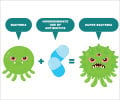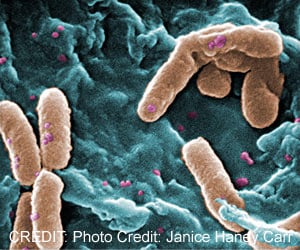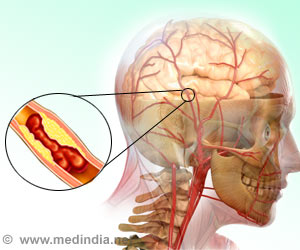
UK/Portuguese study strongly suggests antibiotic-resistant “superbugs” are being passed from cats and dogs to their owners
Go to source). This discovery heightens apprehensions about pets potentially serving as reservoirs for resistance, thus facilitating the proliferation of resistance to crucial medications.
‘Drug-resistant infections claim over 1.2 million lives annually worldwide, a number forecasted to escalate to 10 million by 2050 without intervention. #antibioticresistance ’
Tweet it Now
Antibiotic resistance is reaching dangerously high levels around the world. World Health Organization (WHO) classes antibiotic resistance as one of the greatest public health threats facing humanity. “Recent research indicates that the transmission of antimicrobial resistance (AMR) bacteria between humans and animals, including pets, is crucial in maintaining resistance levels, challenging the traditional belief that humans are the main carriers of AMR bacteria in the community,” says lead researcher Juliana Menezes, of the Antibiotic Resistance Lab at the Centre of Interdisciplinary Research in Animal Health, Faculty of Veterinary Medicine, University of Lisbon.
“Understanding and addressing the transmission of AMR bacteria from pets to humans is essential for effectively combating antimicrobial resistance in both human and animal populations.”
Ms Menezes and colleagues tested faucal and urine samples and skin swabs from dogs and cats and their owners for Enterobacterales (a large family of bacteria which includes E. coli and Klebsiella pneumoniae) resistant to common antibiotics.
Antibiotic-Resistant Bacteria in Pets and Humans
They focused on bacteria resistant to third generation cephalosporins (used to treat a broad range of conditions, including meningitis, pneumonia and sepsis, they are classed among the most critically important antibiotics for human medicine by the World Health Organization) and carbapenems (part of the last line of defence when other antibiotics have failed).The prospective longitudinal study involved five cats, 38 dogs and 78 humans from 43 households in Portugal and 22 dogs and 56 humans from 22 households in the UK.Advertisement
In Portugal, one dog (1/43 pets, 2.3%) was colonized by an OXA-181-producing multidrug-resistant Escherichia coli strain. OXA-181 is an enzyme that confers resistance to carbapenems.
Advertisement
In five households, one home with a cat and four with dogs, both pet and owner were carrying ESBL/AmpC-producing bacteria. Genetic analysis showed the strains to be the same, indicating that the bacteria passed between pet and owner.
In one of these five households, a dog and owner also had the same strain of antibiotic-resistant Klebsiella pneumoniae.
In the UK, one dog (1/22 pets,14.3%) was colonized by two strains of multidrug-resistant E. coli producing NDM-5 beta-lactamase. These E. coli were resistant to third generation cephalosporins, carbapenems and several other families of antibiotics.
ESBL/AmpC-producing Enterobacterales were isolated from eight dogs (8/22 pets, 36.4%) and three owners (3/24 owners, 12.5%).
In two households, both dog and owner were carrying the same ESBL/AmpC-producing bacteria.
It wasn't possible to prove the direction of transmission, however, in three of the homes in Portugal, the timing of the positive tests for the ESBL/AmpC-producing bacteria strongly suggest that, in these cases at least, the bacteria were being passed from pet (two dogs and one cat) to human.
Ms Menezes, a PhD student, says: “Our findings underline the importance of including pet-owning households in national programmes that monitor levels of antibiotic resistance.
“Learning more about the resistance in pets would aid in the development of informed and targeted interventions to safeguard both animal and human health.”
Bacteria can be passed between pets and humans by petting, touching or kissing and through the handling of faeces. To prevent transmission, the researchers recommend owners practice good hygiene, including washing their hands after petting their dog or cat and after handling their waste.
“When your pet is unwell, consider isolating them in one room to prevent the spread of bacteria throughout the house and clean the other rooms thoroughly,” adds Ms Menezes.
All of the dogs and cats were successfully treated for their infections. The owners did not have infections and so did not need treatment.
Reference:
- UK/Portuguese study strongly suggests antibiotic-resistant “superbugs” are being passed from cats and dogs to their owners - (https://www.escmid.org/fileadmin/escmid/media/pdf/press_releases/2024/2024-q2/Press_Release_20240412_P1868pawspathogensFINALESCMIDGLOBAL.pdf)
Source-Eurekalert












